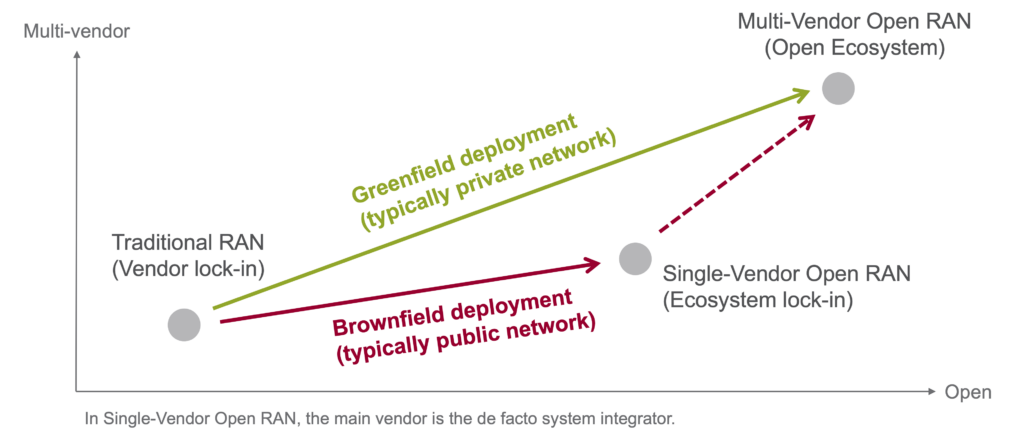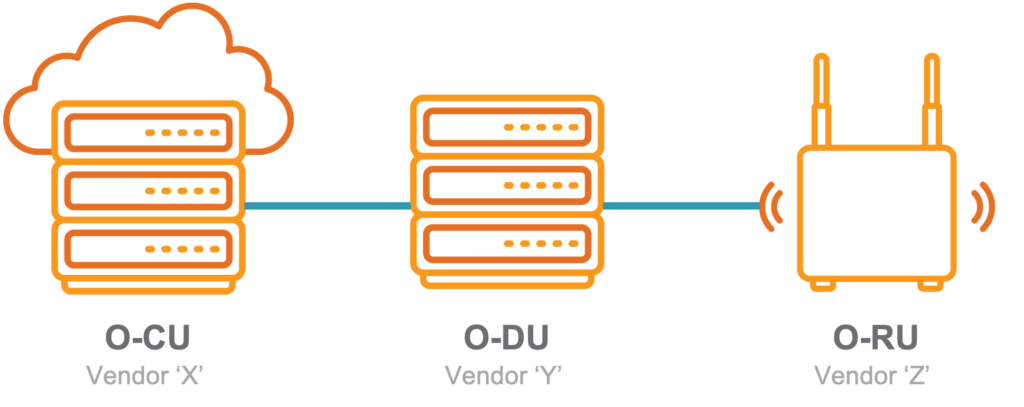Preparing the 5G O-RAN Ecosystem for Multi-Vendor Deployments
By Adam Smith
October 31, 2024As the 5G Open RAN (O-RAN) landscape matures, wireless communications providers have an opportunity to embrace the promise of O-RAN as an open-source standard by augmenting today’s single-vendor 5G deployments with an inclusive multi-vendor model.
I recently had the opportunity to share LitePoint’s perspective on this subject as part of the RCR Wireless News Open RAN Global Forum – discussing the evolving O-RAN marketplace and the test challenges that companies like LitePoint are helping our customers overcome. Hosted by Bruno Tomas, CTO of the Wireless Broadband Alliance, the talk encompassed the state of the O-RAN development ecosystem and the need for comprehensive testing that ensures 5G radio units perform as specified – not just in the lab – but in the real world, too.
The Road from Single to Multi-Vendor O-RAN Deployment
The race to deploy 5G networks based on the O-RAN standard is currently led by a relatively small cadre of vendors, most of which are focused on deploying public 5G networks. These vendors are typically large, well-established RAN providers with the scale and brand recognition to appeal to the leading wireless carriers.
The single-vendor option may make sense for the largest service providers, and it often carries benefits such as reduced costs through bundled discounts and fewer touch points along the design and test chains. But if single-source O-RAN remains the dominant model, we also run the risk of hardware and software suppliers evolving along separate branches of the 5G tree, each shooting off in different, and potentially incompatible, directions.

For O-RAN to reach its full potential, a multi-vendor scenario offers the flexibility to support both public and private networks through collective, collaborative development while promoting a healthy ecosystem that drives down cost and increases energy efficiency.
O-RAN Must Include Both Isolated and End-to-End Testing
One of the critical aspects of 5G O-RAN deployment is ensuring equipment lasts for several years. Unlike the smartphone market, where consumers tend to upgrade their smartphones every two to three years, network equipment is deployed on a five- or 10-year technology replacement cycle.
To make sure that network equipment is built to last and meet interoperability requirements, a key challenge is balancing the need for both isolated testing, which pinpoints specific, component-level issues such as chip latency, as well as end-to-end testing, where we evaluate the network as users experience it.
A radio unit in the real world, for example, requires a test solution not only with vector signal generators and analyzers that emulate real world signals, but also an emulator that interfaces as a distributed unit (DU) that connects to the radio via the front haul interface. As it stands today, this is a complex test framework that is somewhat challenging to set up and maintain.

To simplify the process, LitePoint uses deterministic, repeatable testing methods. For example, when testing a radio unit’s downlink, we synchronize the front-haul using precision timing protocols like the packet-based Precision Time Protocol (PTP) in addition to Synchronous Ethernet (SyncE), which matches the frequency using the Ethernet physical layer (PHY). We then analyze signal quality, ensuring compliance with 3GPP mobile broadband standards.
As we move to higher levels of silicon integration, it becomes more difficult to determine if RF signal issues or interference are caused at the chip-level, as a result of an error in PCB layout, or are an artifact of a faulty power supply. Our detailed analysis catches potential issues like MIMO signal integrity during isolated radio unit test and before end-to-end test, thus avoiding system-level problems later on.
Another critical criteria is the integration of automation solutions. Testing radio units is complex and made more so due to the need for both RF and Ethernet domain expertise. There are few engineers skilled in both areas, and yet the radio unit is a perfect case where these two disciplines converge. This makes it very important for different domain specialists to work with their test vendor and find the simplest way to collect data.
Our goal is to automate as much of this process as possible to make it easier for operators to compare radio unit parametric performance across equipment from different vendors. By providing compliance testing for both 3GPP and the O-RAN front-haul interface, LitePoint simplifies test setup to enable an open, interoperable O-RAN ecosystem.
With our simple platform, which enables a repeatable environment for isolated testing of radio units across a variety of simulated real-world conditions, LitePoint’s IQFR1-RU test system allows wireless service operators to easily evaluate radio units and confidently expand their 5G O-RAN options to deploy multi-vendor systems.
Categories
Subscribe to the LitePoint Blog
Related Posts
3 for 3:O-RAN如何彻底改变无线行业?
October 31, 2024
开放式 RAN(O-RAN): 迈向成熟的挑战与展望
October 31, 2024